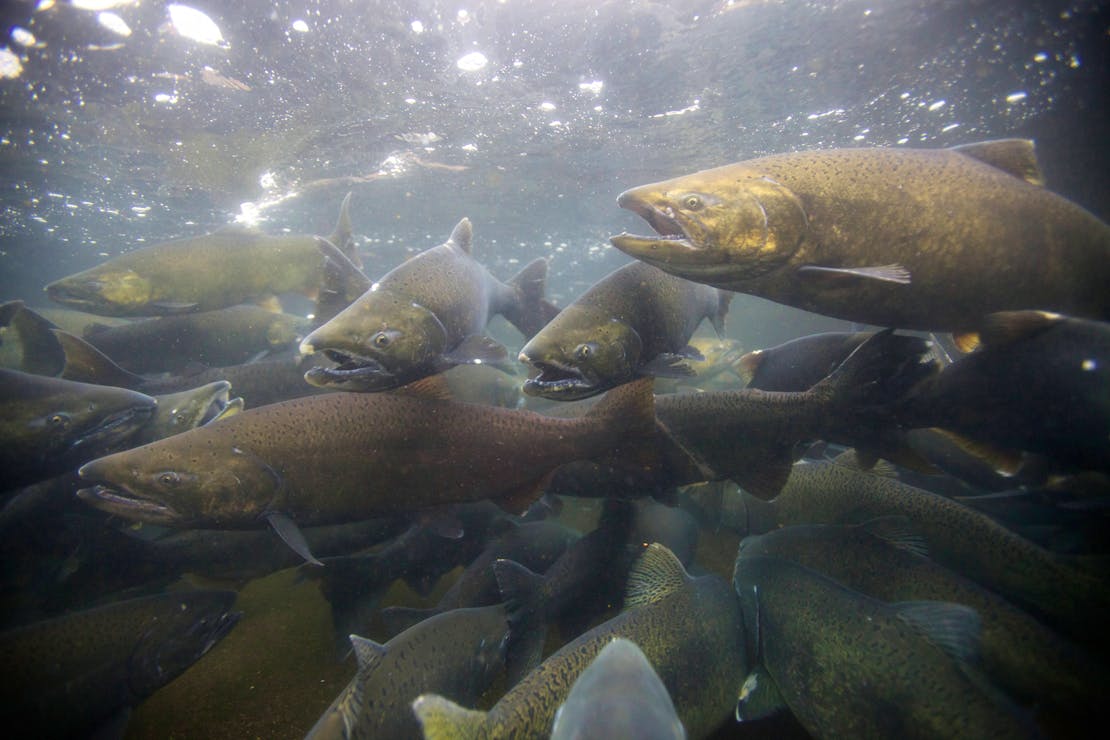It isn’t only wildlife refuges that our many native species rely on for protection. It’s important to remember that national forests and grasslands also play an essential role in the conservation of our nation’s wildlife and habitat. More than 420 animals and plants listed under the Endangered Species Act — and an additional 3,250 at-risk plants and animals — are found on Forest Service lands. These lands encompass an amazing array of habitats, from alpine tundra to tropical rainforest, deciduous and evergreen forests, native grasslands, wetlands and various size streams, lakes and marshes.
Despite the broad array of fish and wildlife and habitat on Forest Service lands, the budget for this program in charge of their stewardship efforts and restoration has substantially eroded. If the program loses any more funding under the fiscal cliff or an overall budget agreement, fish and wildlife conservation work on these lands would be severely impacted.
National Forests and Wildlife
Of the many species on Forest Service lands listed under the Endangered Species Act, more than 100 wildlife species and more than 150 plant species are currently considered priorities for recovery efforts. These would be some of the first efforts to fall to the wayside if the program’s budget is cut any further. Cuts of just ten percent could also prevent the Forest Service from moving forward with its plans to improve wildlife habitat on 25,000 acres of national forests, including habitat for imperiled wildlife such as the red-cockaded woodpecker, salmon and Pacific fisher.
Many of the larger animals in the U.S. that persist because of the havens provided on national forest lands would also be affected, including grizzly bear, wolverine, elk, Canada lynx and bighorn sheep. Since national forests often represent intact, connected habitat, they are often the only suitable remaining habitat for recovery and reintroduction of rare creatures, and they form the backbone of many large-scale conservation plans.
Cuts would also severely diminish the Forest Service’s ability to foster conservation partnerships. Partnerships enable the agency to leverage habitat improvements on an additional 200,000 acres of national forest lands. The agency also partners in innovative efforts that help both communities and wildlife. In just one example, the agency is using the local Job Corps in Montana to install bear-safe garbage containers, keeping bears in forests and out of communities. Other examples of the program’s important wildlife work include:
- Working to cure a disease that is currently decimating prairie dog populations — these rangeland species are important because of their role as prey for the severely endangered black-footed ferret.
- Installing escape ramps in livestock water troughs to help lizards, snakes, birds and bats avoid drowning. This also helps to maintain quality water for livestock operations.
- Working on the Tongass National Forest in Alaska to help harvested areas reach their original, old growth condition at a faster pace. Old growth areas are key for rare and unique species like the Alexander Archipelago wolf and the Queen Charlotte Goshawk.
- Restoring 1,000 acres of sage brush habitat to keep the imperiled Greater sage-grouse off the endangered species list.
National Forests and Freshwater Animals
Significant decreases in funding would be felt underwater as well as on land, and could devastate fish and other freshwater species. Cuts of just ten percent would put an end to the Forest Service’s plans to restore 100 miles of streams and 1,200 acres of lakes, and jeopardize the recovery of 92 threatened and endangered fish species; 64 listed mussel, crustacean and aquatic species; and 440 sensitive aquatic species on national forests and grasslands. It would decimate programs that protect and enhance fishing opportunities and local economies, including these:
- On the Inyo National Forest in California, the Kern River Headwaters Restoration project is restoring a degraded habitat to provide California golden trout with a continued supply of cool, clean water and overall healthy ecosystem.
- The South Fork Skokomish River on the Olympic National Forest in Washington is in a watershed that has been extensively logged. The Forest Service’s restoration efforts in 2010 alone were able to decommission almost 30 miles of road and restore 132 acres of the watershed. These efforts created approximately 60 jobs and resulted in better habitat for species like salmon and steelhead, bull trout, Hood Canal chum and the listed Puget Sound Chinook.
- In Colorado, one of the Forest Service’s priorities is to restore the Upper Swan River watershed to bring back genetically pure native Colorado River cutthroat trout. To accomplish this, old roads will need to be decommissioned and abandoned mines impacting water quality will need to be documented and the habitat restored.
- On the Tongass National Forest in Alaska, Prince of Whales Island was heavily impacted by logging, but recently, more than 360 acres of habitat have been restored in one watershed alone — a great benefit to local fish populations including coho, pink and chum salmon.
Interpretation and Education
Another vital part of the Forest Service’s program work is their nature education and recreation services to the public, such as providing hunting, fishing and viewing opportunities, and working to increase awareness of the importance of America’s wildlife heritage. Every year, for instance, one of the most popular programs is participation in International Migratory Bird Day, hosted annually by more than 38 national forests. Last year, national forests hosted more than 520 presentations on this day, experienced by more than 20,000 people. The agency is currently helping to fund English to Spanish translations for materials used in North, Central and South America and the Caribbean.
Our national forests and grasslands are home to a rich array of wildlife and fish, and it is vital that Congress preserve important funding for Forest Service wildlife and fish conservation work.
This blog written by Mary Elizabeth Beetham, Defender's director of legislative affairs, was originally published in Wild Without End on December 18, 2012.








